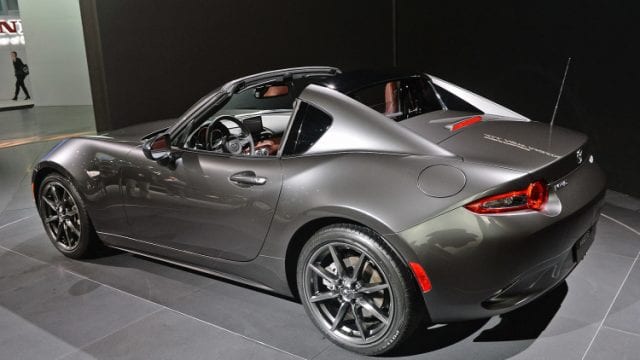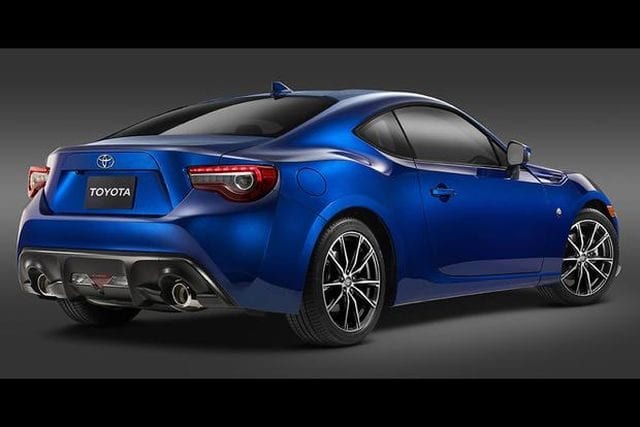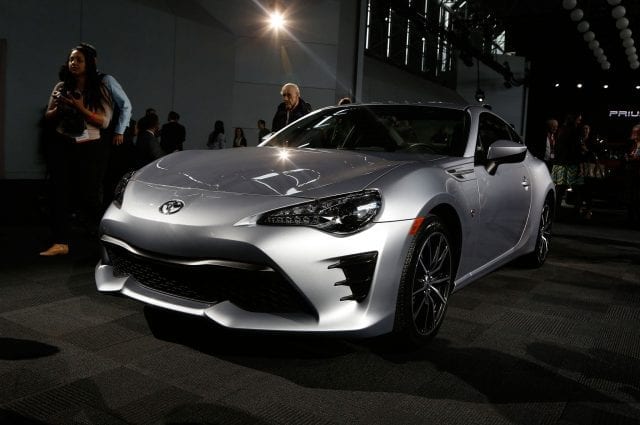The Mazda MX-5 and Toyota 86 are popular cars, and they do not need a special introduction since both vehicles are pretty much the best choice for enthusiasts who like the excitement without paying an extremely high price. These models come with really good handling and decent horsepower, and you will get easily engaged with driving dynamics. When you sit behind the steering wheel of these cars, you will get an amazing feel, and that is why the battle between the 2017 Mazda MX-5 and 2017 Toyota 86 is very alluring for the fans.
These two vehicles bring enough power to challenge the driver and make you earn your enjoyment. You need to get to know the cars, feel them accelerate, trust the handling and learn their architecture in order to see what these models are capable of. Both Mazda MX-5 and Toyota 86 were tested at the track called Haunted Hills, and you need to be careful if you want to drive these cars at a track this demanding.

At first, the Toyota 86 was faster than MX-5 because it really attacked the corners quickly and its front-end setup gave better steering feedback to the driver. Or it just seemed like that. The problem with Toyota 86 is its elongated body which failed to balance weight evenly from the front end to the rear. The Mazda’s tremendous suspension travel seemed to give the car bolder attitude in the curves, but the Mazda MX-5 had fewer oversteer and understeer situations than Toyota.
If you drive the Toyota 86 and you enter the corner at high speed, the understeer is kind of inevitable, and when you also try to trail brake into corners in order to reduce understeer, you would induce oversteer as the tail becomes even lighter. With the 86, the best solution would be to enter turns at slightly lower speed and try to make up for that time as you exit the corner.

The MX-5 is slightly better in turns, it is more accurate, and it communicates quickly saying that you are trying too hard. The little roadster also offers more mid-corner adjustment, and it is generally more forgiving. Mazda is really stable in when you turn left and right and more confident in tricky corners than the Toyota 86. This doesn’t mean much because the Haunted Hills circuit is well maintained and we can say that the vehicles have been tested in a controlled environment. What about the public roads, though?
On a daily basis, you need a car that will not only provide positive feedback and good handling, but that will also transport you from position A to position B with at least some comfort. That is why the 2017 Toyota 86 and 2017 Mazda MX-5 have been taken to the “scenic route” where imperfections, potholes, and bumps are a common occurrence, which is exactly what is needed.
Speaking of comfort, the Toyota 86 is rather disappointing, and its firmer ride on the track may be the advantage, but it is definitely a flaw on poor public roads. The impacts on the single wheel are surprisingly harsh, and the bumps could have a negative effect on the car’s rear end during mid-corner adjustments. However, the steering of the 86 was better than the one of the MX-5. There was more weight at the wheel, while the tiller had a better on-center feel than Mazda’s and it was more linear. The 86 is far from perfect, though. The problem occurs because the stability control is way too sensitive and the system is triggered by the slightest bump or imperfection on the road.
For Mazda MX-5 it doesn’t matter whether you drive it on the track or public roads because the body control is always apparent. Mazda was once again better because of more grip and better mid-corner response and adjustability than the Toyota, but its over-assisted steering earns it some negative points. It was a little bit mundane when it returned instructions from the surface, while provided there were several people in the car plus some cargo, the tail could “bottom out” if it was challenged. Overall, the Mazda MX-5 is more responsive, and it behaves better over the potholes that cannot be avoided.
What about speed and acceleration? The Toyota is a more powerful vehicle but it is also heavier, and from 0 to 60 km/h it was rated at 3.9 seconds, which is the same result of the Mazda MX-5. However, the Toyota 86 was 0.5 seconds faster than Mazda from 0 to 100 km/h with the time of 7.7 seconds. Although the MX-5 was slower, its 1.5-liter engine revved more freely than the unit of the 86 and it felt less confused. On the other hand, Toyota’s 2.0-liter struggled to reach the red line, but once it did, it easily stayed there. Both vehicles can be considered noisy as the 86 allows more road and tire noise in the cabin, opposed to wind noise from the MX-5.
New Rumors about 2018 Mazda 6!
Surprisingly enough, both cars managed to record 13.6m result when the drivers engaged their brakes from 60 km/h. The Mazda MX-5 is equipped with all-disc brakes with 258 mm up front and 255 mm at the back, while the 86 brings ventilated discs with 294 mm at the front and 290 mm rotors at the back. When it comes to fuel consumption, Mazda returned 8.1 liters per 100 km while Toyota was rated at 9.2 liters per 100 km.
Another thing has to be considered before we wrap up this topic. Since the price of both vehicles is around $30,000, materials used in the cabin make a great difference. The MX-5’s surfaces and switchgear are made of higher quality materials than Toyota that looks cheap compared to it. In addition, Mazda wins in terms of ergonomics.

On the other hand, the Toyota 86 boasts a more spacious cabin, and there are two additional seats, but they are mostly for children as it would be difficult for adults to even sit there without bending their necks. However, the rear seats in the 86 can be folded flat, and the car comes with more cargo space, and a real roof is always better than the Mazda’s canvas top. Moreover, Toyota offers a three-year warranty, capped-price servicing and identical pay-as-you-go roadside assistance to Mazda’s, but the warranty of the 86 expires after 100,000km, while Mazda offers an unlimited kilometer deal.
The Mazda MX-5 doesn’t charge for metallic paint and only if you wanted Soul Red would you have to pay $200, while Toyota’s metallic color would set you back $450. Truth be told, Toyota comes with a reversing camera and a 50-liter fuel tank, which is bigger by 5 liters than the Mazda’s. Taking everything into consideration, we believe that Mazda MX-5 is the winner in this duel.
What do you think?









